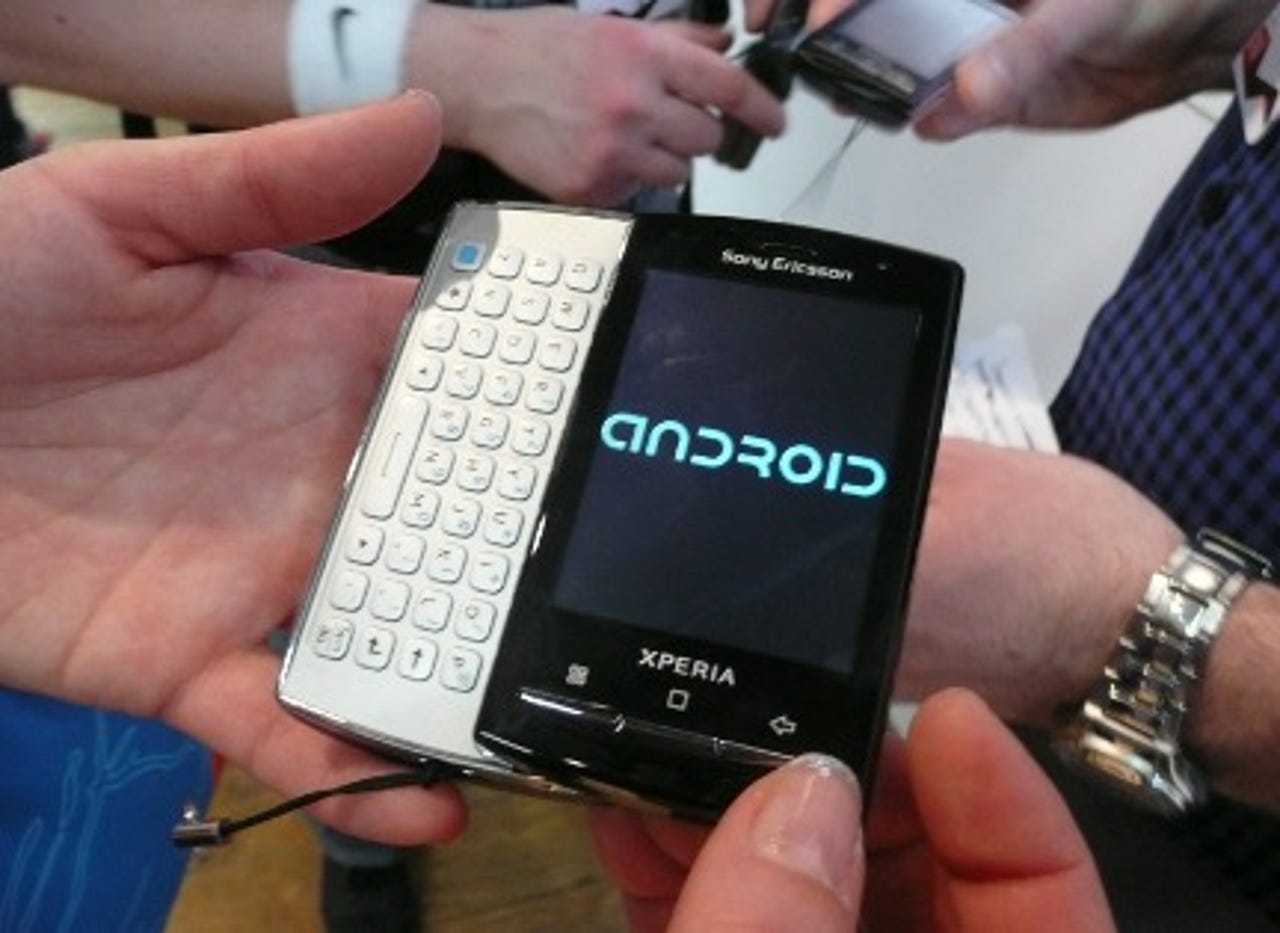Photos: 4G cars, Androids and dancers at MWC 2010


This year's Mobile World Congress had a lot to offer, from the latest handsets to 4G-connected cars.
The biggest hitter at the show was clearly Android. With neither Nokia nor Apple having a presence at the show itself, the field was clear for a plethora of Google-OS'd handsets and services.
One of the most unusual Android devices to be shown was Sony Ericsson's X10 Mini Pro (pictured above) — a very small handset with a Qwerty keypad. The phone is so small for a touchscreen device — its screen measures 2.55 inches diagonally — that Sony Ericsson had to create a specially modified version of Android, based on icons in the corners, that would allow for one-handed operation.
Despite the petite dimensions of the keyboard, ZDNet UK found it to be surprisingly usable.
This picture shows the Sony Ericsson X10 Mini Pro being held next to its marginally older sibling, the comparatively hefty X10. Given its size and keyboard, the Mini Pro lives up to its name.
There was no shortage of Android phone launches at Mobile World Congress, most of them far more standard than Sony Ericsson's tiny implementation of the Google OS.
Motorola's Quench is a prime example. The latest of eight Android phones launched by Motorola over the past six months, it supports Flash Lite and multitouch.
The handset also has interchangeable covers, perhaps in a bid for the youth market.
Symbian had a slight presence at MWC, despite being in a transitionary period between the old, proprietary version of the OS and the forthcoming open-source version.
Sony Ericsson's Vivaz Pro, pictured above, was one of the few handsets using the OS to be launched at this year's show. It is the first of the company's phones featuring a slide-out Qwerty keyboard and based on the Series 60 platform.
One particularly interesting handset on show at Mobile World Congress was the Else phone, a device made by an Israeli design company of the same name.
The handset, which uses Sharp hardware, is based on the Access Linux Platform — itself a descendent of what was once called Palm OS. In common with Sony Ericsson's X10 Mini and Mini Pro Android phones, the Else phone is designed to be used with one hand. Unlike those handsets, though, it uses a completely different user interface from anything else in the market.
The Else's UI is based almost entirely on thumb movements. The user swipes up and down in an arc to access various menu items, then pushes their thumb further in to access submenus or files within a folder.
Else first showed off the handset at a London event a few months ago, but the version it showed at MWC had undergone a lot of tweaking since that first launch. More fine-tuning is on the cards before the handset gets a commercial release, although no operator has picked it up yet.
Not everything on show was a phone — Alcatel-Lucent, for instance, was demonstrating its 4G-connected car concept.
The Toyota Prius was fitted out with a variety of screens and sensors, all of which were hooked up to a mobile-broadband connection using the long-term evolution (LTE) of 3G standard.
This screen showed the panoply of sensor feeds that the driver of Alcatel-Lucent's car would be able to see, in order to keep an eye on the functioning of the vehicle.
The screens inside the vehicle would also be able to use their 4G connection to show high-definition videos, run a web browser or display Google Maps.
It may be out of fashion, but one or two stands still had 'booth babes'.
The Russian company CBoss, for example, used this troop of dancers to drum up attention for their telco billing systems.